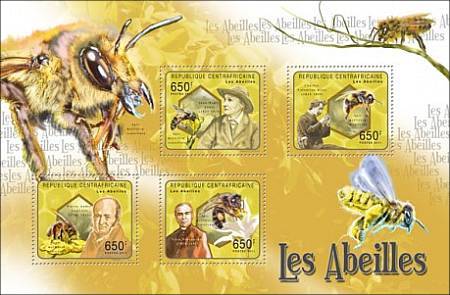Wild bees, crucial pollinators for many crops, are on the decline in some of the main agricultural regions of the United States, according to scientists who produced the first national map of bee populations and identified numerous trouble spots. The researchers on Monday cited 139 counties as especially worrisome, with wild bee numbers decreasing while farmland for crops dependent on such pollinators is increasing. The counties included agricultural regions of California such as the Central Valley, as well as the Pacific northwest, the upper midwest and Great Plains, west Texas and the southern Mississippi river valley. The counties grew crops such as almonds, pumpkins, squashes, blueberries, watermelons, peaches and apples that are highly dependent on pollinators, or had large amounts of less-pollinator-dependent crops including soybeans, canola and cotton. Taylor Ricketts, director of the University of Vermont’s Gund Institute for Ecological Economics, said the 139 counties represent 39% of the pollinator-dependent crop area of the United States and most likely will face inadequate pollination in the future. “Wild bee declines may increase costs for farmers and, over time, could even destabilize crop production,” Ricketts said.
The study estimated that wild bee numbers diminished in 23% of the continental United States between 2008 and 2013 in a trend driven by conversion of their natural habitat into farmland including corn for biofuel production.
Their decline may prompt greater dependence on commercial honeybee colonies for pollinating crops, but honeybee numbers also are falling, added Gund Institute researcher Insu Koh, the lead author of the study, published in the Proceedings of the National Academy of Sciences.
“Our results highlight the need for strategies to maintain pollinator populations in farmland, and the importance of conservation programs that provide flowering habitat that can support wild bees and other pollinators,” said Michigan State University entomologist Rufus Isaacs, who heads the US Department of Agriculture-funded Integrated Crop Pollination Project.
The study followed a 2014 memorandum by Barack Obama creating a task force to study pollinator losses. The task force in May called for preserving wide swathes of pollinator habitats.
Source: The Guardian, 21 December 2015
http://www.theguardian.com/us-news/2015/dec/21/wild-bees-population-dec…

- Login om te reageren

Wild bees decline where crop pollination most needed
The paper, titled “Modeling the Status, Trends and Impacts of Wild Bee Abundance in the United States,” will be published online Dec. 22 in the Proceedings of the Natural Academy of Science. This was the first-ever attempt to simultaneously map the trends in wild bee abundance based on recent land conversion and the demand for pollination of different crops across the nation. The seven-member team, organized by lead author Insu Koh of the Gund Institute for Ecological Economics at the University of Vermont, Burlington, integrated a wild bee habitat model, land cover data and expert knowledge to map U.S. bee abundance and trends. “We see striking mismatches in many places between the demand for pollination and the ability of wild pollinators to support that need,” said pollination ecologist Neal Williams, an associate professor in the UC Davis Department of Entomology and Nematology. Williams helped design the study and led efforts to assess bee habitat quality as part of the Integrated Crop Pollination Project.
“Indeed it is crops where demand has most increased that we estimate greatest decline in wild pollinator supply,” Williams said.
“The research is also unique in including uncertainty in our knowledge of the quality of habitat for pollinators and thus recognizes where more effort is needed to understand the vulnerability of pollination services,” he added.
The authors noted that the supply of managed honeybees has not kept pace with pollination demand and needs, due to management challenges and colony loss over the last decade. “There is growing evidence that wild, unmanaged bees can provide effective pollination services where sufficient habitat exists to support their populations,” they wrote.
In addition to Koh and Williams, the team included Claire Brittain of the Neal Williams lab, UC Davis Department of Entomology and Nematology; Eric Lonsdorf of Franklin and Marshall College, Lancaster, Pennsylvania; Rufus Isaacs and Jason Gibbs of Michigan State University, East Lansing; and Taylor Ricketts of the Gund Institute and the University of Vermont.
The study was completed with support from the Specialty Crop Research Initiative of the U.S. Department of Agriculture’s National Institute for Food and Agriculture.
Source: UC Davis, December 22, 2015
http://news.ucdavis.edu/search/news_detail.lasso?id=11423